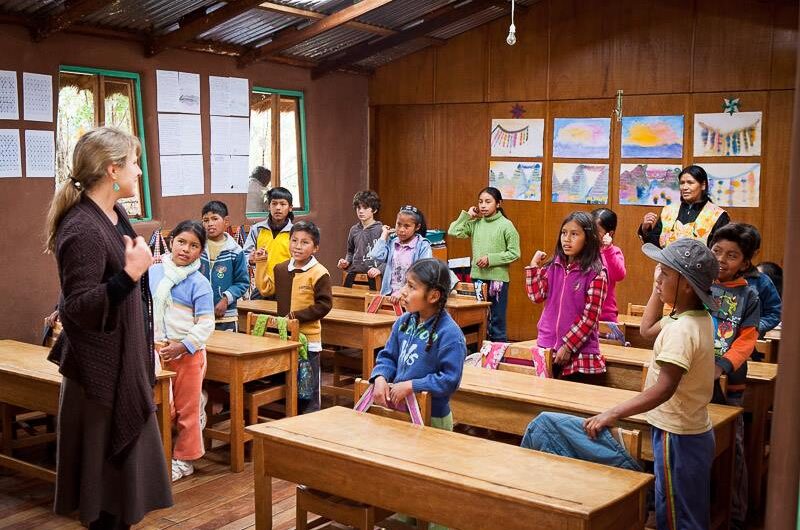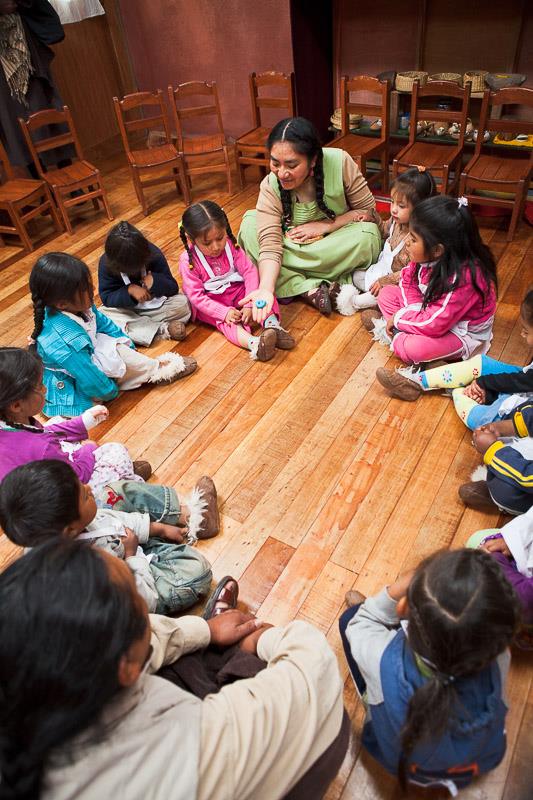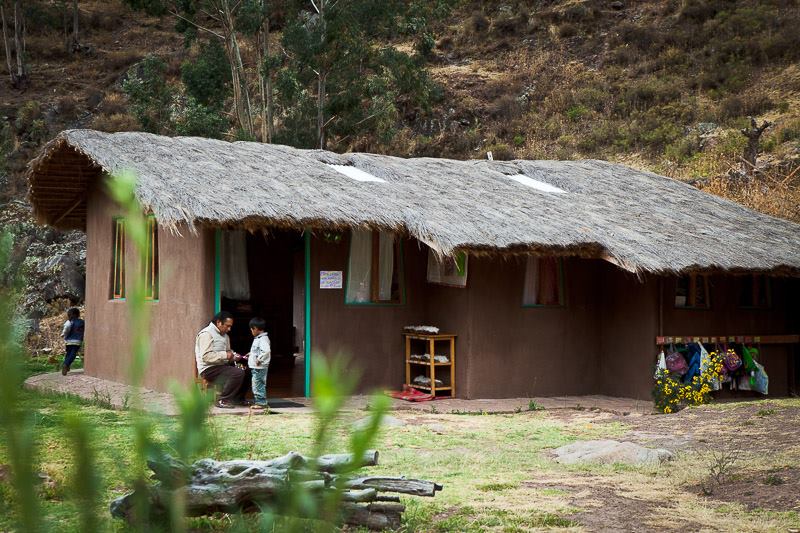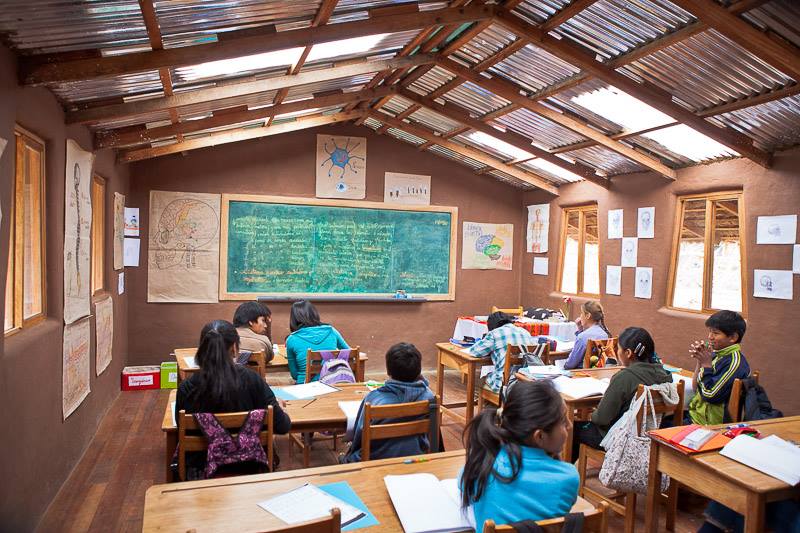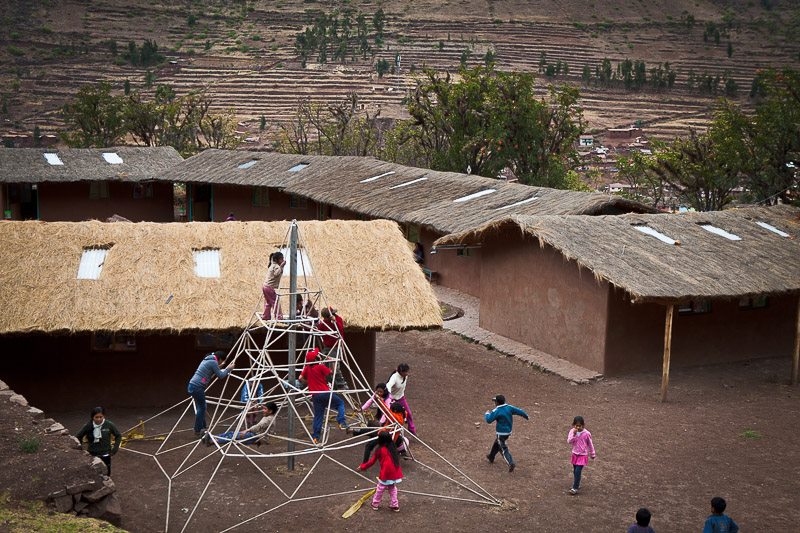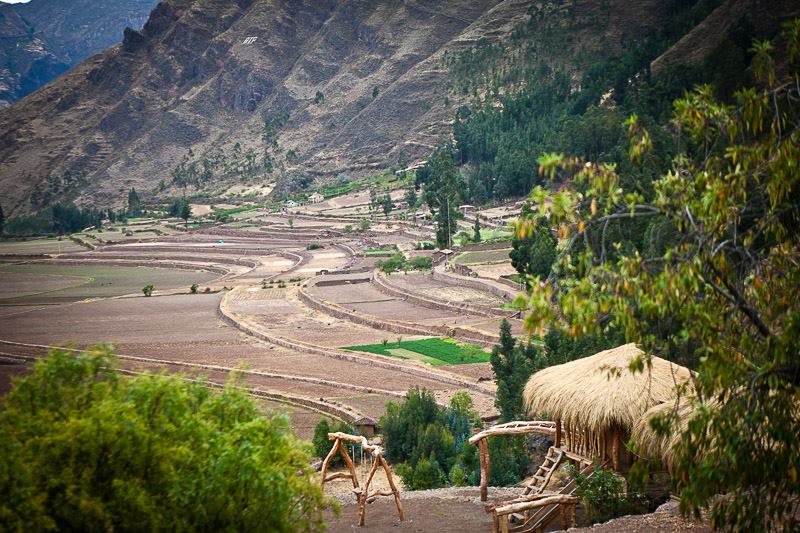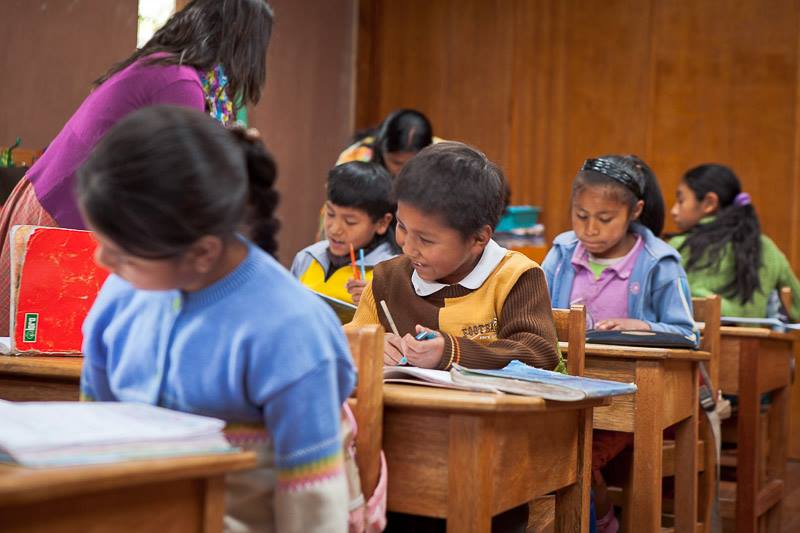Educational institution, Kusi Kawsay in Pisac celebrated its 5th anniversary this year, and looking at recent advances the school has made, it is clear how it has matured and grown since its opening. For those unfamiliar with Kusi Kawsay, it is an independently-run school situated just above the famous Pisac Market in the Urubamba Valley with a pedagogy modeled on the Waldorf Educational Method. The focus here is on the incorporation of Andean culture and worldview into the classroom, placing a special importance on the arts. It was founded by five families who felt that traditional schools in the Cusco region discouraged Andean children from expressing and taking pride in their cultural heritage among other concerns about the overall management of students, classrooms and staff. So they started their own school, Kusi Kawsay, which in Quechua means “happy life”.
Aracari has paid the school several visits, and our guests have generously donated this wonderful institution, contributing directly to its development and thus the development of the children who attend, as the school depends on individual donors and grants. Aracari also offers guests the opportunity to visit the school in Pisac to learn about its foundation and development from one of the founding parents. Below are some of the latest developments that Kusi Kawsay shared in its annual report for their 2013 academic year. The full report can be found here.
Teacher training and developments – Kusi Kawsay received a one-year grant from Global Fund for Children towards organizational development of the school to work on interpersonal dynamics among faculty and assisting with the further progression of planning, fundraising, governance, human resource development, financial management, monitoring, learning and assessment. In addition to this support, Kusi Kawsay has yearly workshops for teacher training from ProHumanus, a civil association in Peru that offers teachers further training in the Waldorf pedagogy and resources to aid them in the classroom.
Officially Registered to Teach High School – For a time the older students at Kusi Kawsay were unsure if their credits at Kusi Kawsay would count elsewhere until recently when the school was given license to teach secondary education as well. Now students’ secondary education from Kusi Kawsay will count nationally and internationally as they look to the future for work or to pursue higher education.
Kusi Ñan Organic Farm Project – For the students of Kusi Kawsay, the Kusi Ñan organic farm is an entrepreneurial project to teach them about sustainable, organic agricultural practices, as well as microbusiness skills. The recently acquired plot of land is located ideally in the outskirts of Pisac, just below the school, which overlooks the city. Products grown on the farm are sold to local restaurants and at the local market to raise funds for the school while preparing students with real-life skills.
Happenings on Campus – Many recent advances show promise for the future of Kusi Kawsay, like the new classroom for the 8th grade that has been built with the oversight of one of the Kusi Kawsay parents, as well as a new brick oven to be installed for the kindergarten bakers who make fresh bread for students as a snack.
One of the triannual academic expositions brought many townspeople and local authorities, including the mayor of Pisac, to visit Kusi Kawsay and witness its development and the advances of its talented, enthusiastic students. This exposition was accompanied by an Andean feast prepared by the parents that was a big success.
Music has been more strongly incorporated into the curriculum at Kusi Kawsay under the guidance of Carlos and Tita, two of the founding parents, who composed songs for each classroom to celebrate the Andean calendar and also made reed flutes with the students. The musical teaching has been monumental and adds to the pride in the Andean culture fomented at Kusi Kawsay by connecting students to the unique worldview and traditions of the Andes via music, which is as educational as it is interactive and fun for them.
All photo credits to Matt Dayka with permission of Kusi Kawsay
Looking Ahead-Financial Support & Much-Needed Resources – As mentioned, Kusi Kawsay receives most of its funding from private donors and grants, and because the school operates on a sliding pay scale for students, some only able to cover 7% of tuition costs, these donations are vital. To continue flourishing, Kusi Kawsay is always looking for fundraising opportunities, and 2013 marked their most eventful year yet with fundraisers in the U.S. and U.K. that brought in about $50,000. However, donations and events cover about 74% of the budget, and Kusi Kawsay still needs resources like books for the library, more staff and classrooms, more volunteers and a program to manage them, more funding to provide students transportation and a nutritional snack during the school day, as well as funding for the “Ayni” Scholarship program that subsidizes the tuition for those families who cannot afford to pay in full.
To learn how to get involved by donating, fundraising or volunteering for Kusi Kawsay, visit their website for information or contact us if you are interested in visiting the school during a trip in the Urubamba Valley.

